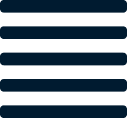By now, you may be familiar with what Demand Planning is. This process of quantifying consumer interest is multi faceted and requires the planner to wear many hats. In this post we’ll cover what a career in inventory planning entails and what the future of this role looks like.
A planner by any other name
Let’s start with the basics - what is the role of an inventory planner called? Like many titles, this depends on the size of the business and team, scope of the role, and level of experience needed. In a small business or one that is just starting out, this role might belong to a founder or executive. As businesses grow, they might fill in for the specific functions they need. This causes a split both in the function name as well as the hierarchy level.
When it comes to the function, relevant teams include: Operations, Supply Chain, Product, Channel (eCommerce, Retail, Wholesale), Sales, Finance, and of course, Planning. Businesses should use the structure of their organizational hierarchy to attach a level to this role such as: VP, Director, Manager, Associate, or any variation in between. Alas, you’ll find the perfect marriage of a title that works for your needs.
A special set of skills
An inventory planner will need to possess a handful of special skills. Depending on the scope of their role, they may also need to be a strong leader and foster effective team & time management.
A person in this role will need to be able to think critically and combine both quantitative and qualitative insights in order to make decisions. Communication skills and business acumen will further support this role as Planning collaborates with various departments. Furthermore, given their level of responsibility, it’s imperative that this person also has the ability to influence leaders and react quickly to changes.
Use of systems
To support the skills mentioned above, a planner will utilize a set of systems and therefore must possess the technical knowledge in order to do so. Common tools of the trade include spreadsheets and forecasting models as well as systems that house necessary inputs. These inputs may be spread across a single or multiple sources.
We built Fuse to be your central source of truth for all things Planning. Our system automatically syncs your on hand and on order inventory along with your sales data and supply chain variables. With Fuse, you can have a single system for planning and procuring your inventory.
Measures of success
Fortunately, the importance and success of a planner is something that can be quantified. The following should be assessed regularly to understand improvements over time:
- GMROI - Evaluates the degree to which a product yields financial gain as measured by a price to earnings ratio.
- Turn - Tracks the velocity of inventory.
- WOS - Values safety stock as it relates to future demand.
- OOS Rate - Refers to the amount of an assortment that is not in stock.
- Sell-Thru Rate - Measures how much inventory is sold in a given timeframe.
- Sales vs Inventory - Quantifies the value of inventory relative to its contribution to sales.
- % to Plan - Measures the % variance of actual sales to forecasted sales in a given time period.
What the future holds
Because this role manages the availability and timing of products, the planner will need to adapt to the buying behaviors of the consumer. As shopping trends change from traditional brick-and-mortar to DTC and beyond, so does the role of the planner.
Current and future trends in buying platforms include an expansion in digital and social channel shopping (Instagram, Pinterest, etc.), as well as partnerships, re-sellers, and innovative retail. Each channel may have its own demand and inventory needs which will need to be tracked and analyzed in order to understand total business trends.
Supply chain is another aspect that influences planning. A planner may need to adapt their work for changes in lead times, vendors, and locations. Luckily, Fuse makes this easy to do by accounting for all inputs and variables in one central place.
Typically, a planner will need to manage a combination of changes between channels and business functions. Given the current shifts in the retail climate, planners will also need to adapt to new demand patterns and prepare for possible disruptions.
Sounds like a lot
It sure is. A planner is one of the most critical hires an organization can make. Without them, you’ll be left out of stock, overstocked, and wishing you had read this sooner.
To learn more about the world of demand planning, check out our other posts, notably:
- What is Demand Planning?
- How to Get Started with Inventory Planning
- 7 Ways to Improve Your Business with Demand Planning
Fuse Inventory was built by a team of supply chain and planning professionals. We understand the pain points of planning and procuring your inventory. So, we built the solution for it. To learn more, email us at hello@fuseinventory.com.
.png)

.png)









.png)



%20hover.png)
.png)
hover.png)







Let us know what you think about this post
Put your comment below.